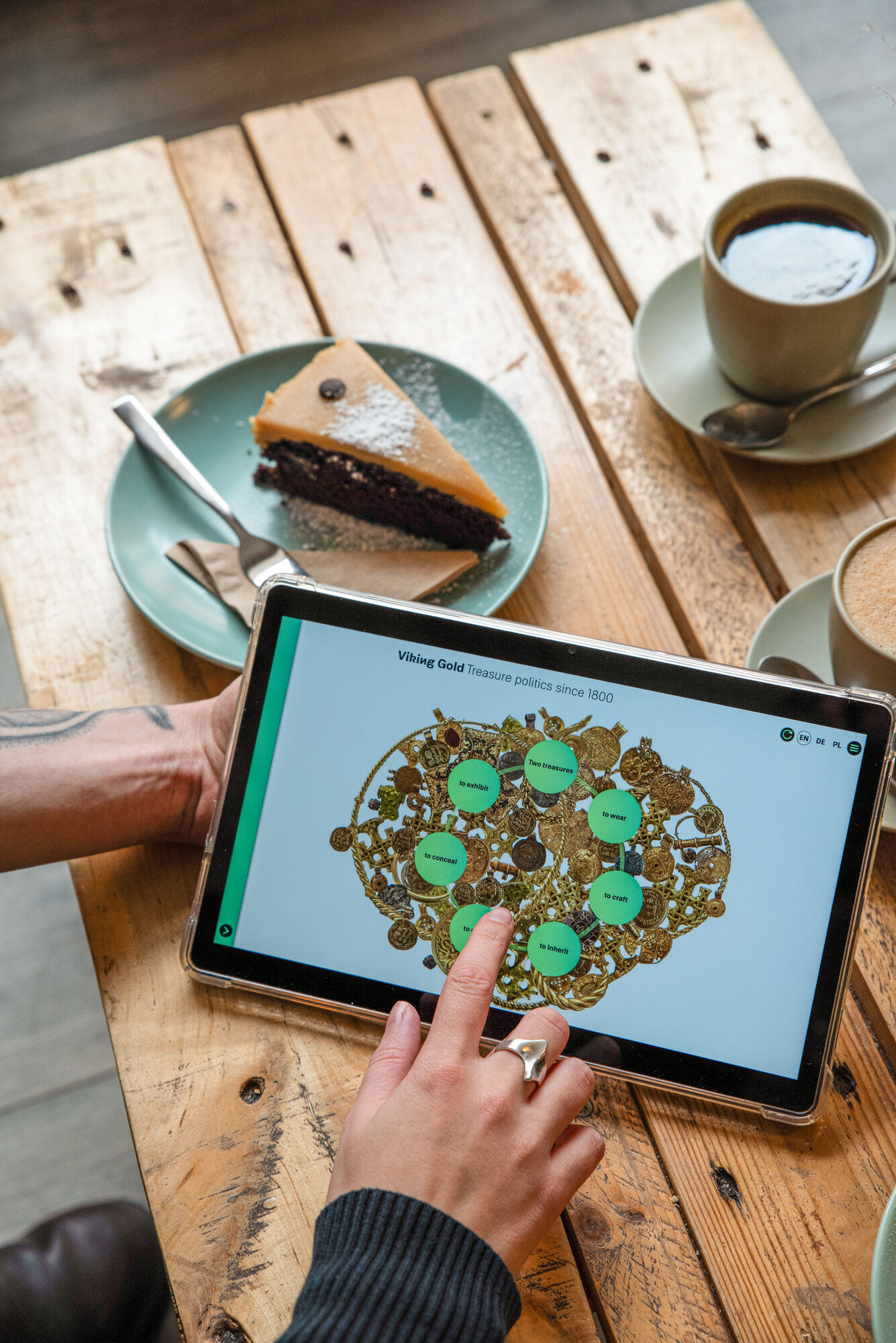Viking-Age treasures (ca. 800–1100) are found in the Baltic Sea region time and time again. That is how it has always been: A farm worker in south-east Norway discovered the Hoen treasure in 1834, a find that indicates global connections in the early Middle Ages. Further treasure was discovered on the island of Hiddensee between 1872 and 1874: the so-called Hiddenseer Goldschmuck (Hiddensee gold jewellery). The jewellery, consisting of 16 pieces, is of exceptional quality and was made around the year 1000 for Danish royalty.
The discovery of these treasures triggered complex processes of appropriation that change over time. In this process, questions were and are still being raised: Who is allowed to store and safeguard the ‘Viking gold’? Where should it be displayed? Who identifies with it? Who rejects it?
The exhibition was curated by Isabelle Dolezalek (formerly of the University of Greifswald, now at the Technische Universität Berlin) and Charlotte Wenke (University of Greifswald). It showcases the role of Viking-Age gold treasures as cultural heritage in people's everyday lives and how closely cultural heritage was and is interwoven with politics. It makes evident that both the appropriation of cultural heritage and the disassociation from it are politically charged.
The seven chapters of the exhibition use a variety of formats to explore the many facets of treasure politics. For example, they discuss the significance of gold in the Viking Age, and how, in addition to its material value, an immaterial value was also attached to it, and that the treasure finds were perceived as historical artefacts and cultural heritage. The question as to who actually owns these early medieval treasures and whose cultural heritage they are is also explored. In addition, the exhibition addresses the handling of the treasures and their political appropriation in wars and exhibitions.
The digital exhibition presents the results of research collaboration between the Stralsund Museum and the Interdisciplinary Centre for Baltic Sea Region Research (IFZO) at the University of Greifswald. The project Viking Gold. Treasure Troves as Trans-Local Heritage, belongs to the Fragmented Transformations project and is led by Prof. Dr. Isabelle Dolezalek. It is dedicated to the discovery, reception and curatorial presentation of early medieval gold treasures in the Baltic Sea region from the 19th century to present day. Some of the research results have already been made publicly available in scientific publications and teaching materials for use in schools. One aim is to shed light on the historical roots of today's appropriation of so-called Viking culture in global (right-wing) populist discourse.
The digital exhibition is now being promoted by the poster campaign in Greifswald and Stralsund. A travelling exhibition will go on tour at the beginning of 2025. It will be on display at the Museum of Archaeology and History in Elbląg (Poland), the Midgard Viking Centre in Borre (Norway) and on Gotland, among other places. The exhibition provides a setting for digital presentation and invites you to participate on Instagram at @vikinggold_treasurepolitics with #myvikingbling.
The project is funded by the Federal Ministry of Education and Research. The project team was supported by the Berlin-based exhibition company museeon. Ron Warmbier was in charge of the programming.
Further information
The Baltic Sea region forms a cultural, geographical and political whole that is characterised by a diversity of cultures, a unique ecosystem and its geopolitical relevance. The Interdisciplinary Centre for Baltic Sea Region Research (IFZO) conducts research that looks into the Baltic Sea region based on the diverse connections between cultures and their transnational institutions, as well as their influence on the ecosystem.
You can find the exhibition at: https://vikinggold.org
Instagram: @vikinggold_treasurepolitics #myvikingbling
https://www.museeon.de/
https://ron.kanzownet.de/index.html
Photos can be requested free of charge for editorial use in connection with this media information at pressestelleuni-greifswaldde. When images are published, the name of the photographer must be stated.
Contact at the University of Greifswald
Prof. Dr. Isabelle Dolezalek
Interdisciplinary Centre for Baltic Sea Region Research (IFZO)
Bahnhofstraße 51, 17489 Greifswald
i.dolezalekuni-greifswaldde



